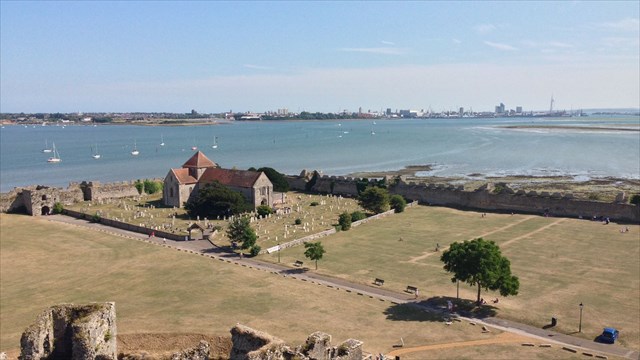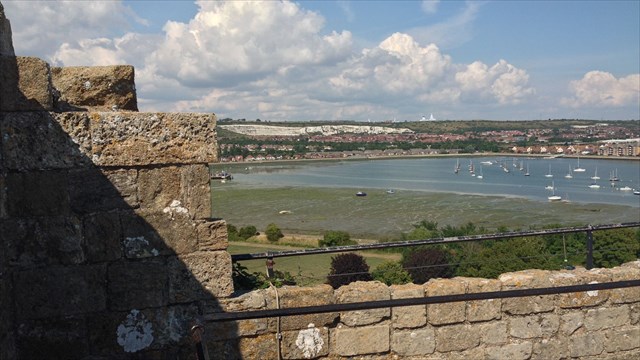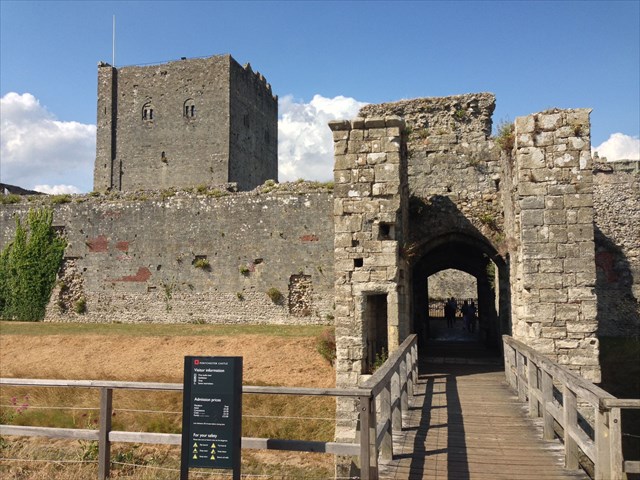
Geology
Ninety million years ago the ground beneath us was the sea bed. Tiny creatures lived on the marine debris that showered down from the surface and water nearer the surface. Their shells were made of calcium carbonate know as calcite. When they died, they fell to the sea bed, and over time a deep layer built up. Eventually, the weight of this build up was so great that they became consolidated into rock. This build up of calcium carbonate is became chalk. Later geological movements led to the chalk being able sea level as it is today.
Within the deposits of chalk, flint can be found. Flints are lumps of material in the chalk known as nodules. The exact mode of formation of flint is not yet clear but it is thought that it occurs as a result of chemical changes in compressed rock formations, during the process of diagenesis. One theory is that cavities in the sediment, such as holes bored by crustaceans or molluscs, are filled by other materials, eventually forming flint. This hypothesis certainly explains the complex shapes of flint nodules that are found. Flint from this area of Britain often contain marine fossils within them.

Portchester Castle
The Romans set about building their south coast fort (Portus Adurni) in the 3rd century CE to defend the south coast, possibly from Saxon raiders. They used local Chalk and Flint in the construction from Portsdown Hill, three miles away, and visible from the fort. It is estimated that 15,000 cartloads of material was needed. The walls were originally 3m wide and over 6m tall (although they have been quarried in places during later periods for building material). The walls extend down into the ground, forming a short foundation. Layers of flint and chalk were constructed, with larger pieces of flint forming the outside of the wall which is still visible.
Incredibly the outside of the walls are roughly in the same condition as the were in Roman times. This is probably because the fort was occupied on and off for 16 centuries after the Romans had left. Because of this, this is the best preserved example of a Roman fort in Britain, and probably the best north of the Alps.

Logging Your Find
In order to log your find, please send a message to my profile answering the following questions. There is no information about the stone outside the castle, so you may need to do some research to answer these questions, the answers to which are freely available on the internet.
- Go to Waypoint 1 (N50 50.237 W001 06.927) or any point around the outside of the Roman walls.
- In some detail, describe how the wall looks and feels. If you think there are different textures please describe them.
- The main rock used is flint. What type of rock (Igneous, Sedimetary or Metamorphic) is this, and why do you think this?
- In which geological period was the flint and chalk formed (e.g. Jurassic, Triassic, Cretaceous, Carboniferous...)?
- The chalk here has been turned into a building material called lime. How do you think this happened?
- Go to Waypoint 2 (N50 50.319 W001 06.873), the larger of the car parks.
- Look to the North East and you will see Portsdown Hill. Other than because of mining, why do you think chalk cliff edges are visible, rather than other rocks?
- Why do you think the Romans used flint and chalk to construct their fort?
In addition, optionally upload a picture of yourself or your GPS in or around Portchester Castle. You can log your find immediately, but please send the answers within 24 hours. Once I have received your message I will respond as soon as I can. Logs where a message has not been received may be deleted.
I hope you enjoy the cache! This is only my second Earthcache so any feedback is greatly appreciated!